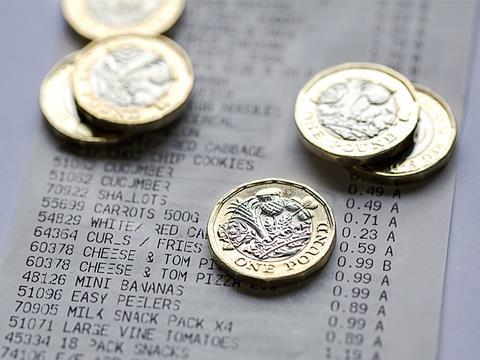
August saw UK inflation fall for the first time in nearly a year. Down 0.2% following July’s 10.1% high, according to the ONS, this change is encouraging, but it’s unfortunately not the same story in grocery retail.
Despite what the big headlines may suggest, the inflation facing UK shoppers remains unyielding. In August, the same month UK inflation dropped, 89% of adults reported an increase in their cost of living. And this challenging financial time is set to continue deep into 2023.
UK shoppers are making significant and rapidly evolving changes to buying habits in reaction to the cost inflation we’re facing. What’s vital to highlight, however, is that there is no single overwhelming reaction. At IRI we work with major UK retailers, running loyalty schemes that observe the behaviours of 32.7 million shoppers every week, and what’s clear is that households up and down the country are reacting to inflating costs in different ways, using different coping mechanisms. And they’re working.
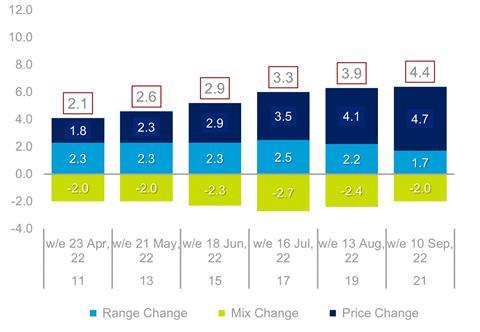
- Range change: new listings/delistings. The weighted inflationary or deflationary impact of products either listed or delisted by a retailer
- Mix change: impact of trading down/trading up. The weighted impact of shopper choice of consistently available products
- Price change: inflation. The weighted inflationary or deflationary impact of price changes across all consistently available products
We know inflation is currently running at 9.9%, but the above extract from our IRI Inflation Monitor shows the increase in actual shopper spend across stores to be 4.4%, with shoppers changing what they buy to partly offset the increase in prices. How is this happening? We’re seeing five distinct coping mechanisms – from unprecedented shopper decisions to new retailer strategies – play out in stores throughout the UK.
1. Choosing discounters
UK shoppers are turning to discounters for more of the categories found on their weekly lists. This is clearly evident from Aldi’s H1 trading statement, in which it shared that for the first six months of the year growth was 18.7%, up from a 0.4% decline in 2021. Customer numbers increased by 1.5 million to 14.2 million. There are no signs this growth will slow in H2, which will continue to be a major challenge for brands and other retailers alike.
2. Retailers adapting to help manage overall basket spend
Retailers are adapting to help their customers manage price changes across the entire shopping basket. Whereas the norm is for retailers to change in line with suppliers increasing cost prices, now we are seeing them adopt a more strategic approach that’s seeing pricing held in some categories and bigger jumps in others to balance it out.
The aim here is to better help shoppers manage their overall basket spend, with staple items – such as tea and beers, wines and spirits – seeing relatively little movement: the total price change in BWS from last year to the four weeks of August is just 0.8% up. Whereas a category like petcare is seeing inflation reach 17.2% in the same period.
3. Buying less
Compared to last year, shoppers across both supermarkets and convenience stores are purchasing, on average, one item less. There’s huge variety in the products people are forfeiting, which is why this coping mechanism is impacting many different categories – again, stressing the behavioural differences at a household level. Nonetheless, this is a big trend for impulse brands and categories to keep an eye on.
4. Choosing smaller pack sizes
Larger packs are associated with greater value, and their popularity typically surges in recessionary environments as a result. But right now, the opposite is happening. Currently shoppers are choosing to pick up cheaper, smaller packs more frequently because the larger packs are simply too expensive for weekly budgets on a cashflow basis.
This is a trend clearly playing out in categories like shampoo and is also taking its toll on confectionery. Here shoppers are opting for small packs and also buying treats less often – the combination of the two is having a big impact on sales volume.
And it’s not only customers who are changing: shrinkflation is seeing brands driving the smaller pack trend too. To maintain prices, many are shrinking their products in size or quantity. We’re seeing this play out across the entire store, from chilled ready meals to biscuits.
Consumers downtrading purchase volume is typically a big fear for brands, but in this unique climate it’s becoming a way to maintain brand loyalty and prevent shoppers moving to different brands at a lower entry price.
5. Swapping in cheaper alternatives
Customers downtrading to private label is a well-documented coping mechanism when the going gets tough. And as branded options in petcare, ambient grocery and household categories go up in price, we’re seeing private label benefit.
What’s significant now, however, is the downtrading to private label in categories where we see strong brand loyalty in normal times. Jams, tea, coffee, toilet paper and cleaning products would typically fall into that bucket, but right now we’re seeing the share of private label increase in these categories too.
This is happening while private label prices are rising faster than branded. Yet despite this, private label still by and large provides the entry-level product in a category and is being rewarded by shoppers.
So, what does this mean looking ahead?
Above all else, it’s clear that what’s happening in grocery retail right now is complex. For this reason, strategies should be educated or informed by a total, nationwide view that averages out the changes. Decisions are differing from one household to the next, and they’re rapidly changing; every retailer and brand will be significantly impacted by these trends. Whilst total household inflation may start to flatten off following the new government’s interventions, we expect to see inflation continue to take its toll on groceries as brands pass on inflated costs.
Understanding how shoppers are reacting to this climate on a brand-by-brand and channel-by-channel level is vital – it’s not a nice to have. This granular knowledge is the ultimate tool in determining how to balance between offsetting rising internal costs and doing the right thing for shoppers. Safe to say, the winners in this market are those who balance best, both in the short and medium term.
















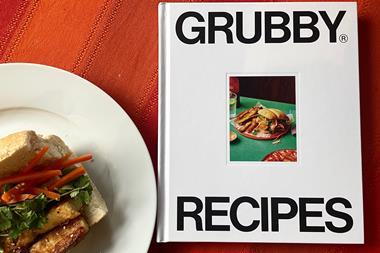
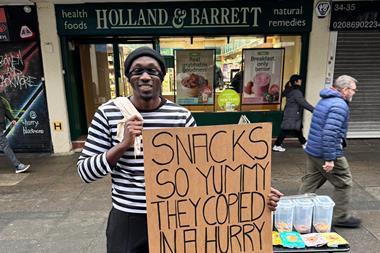
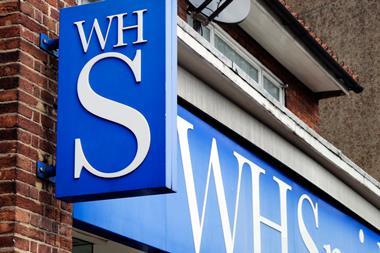
No comments yet